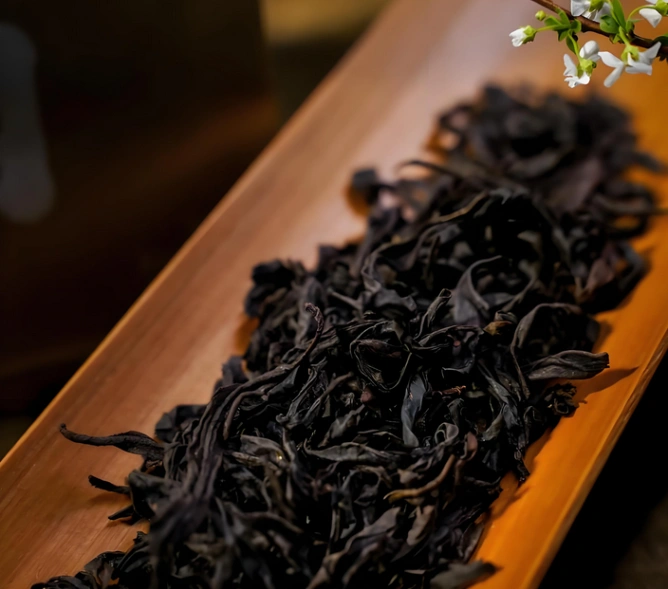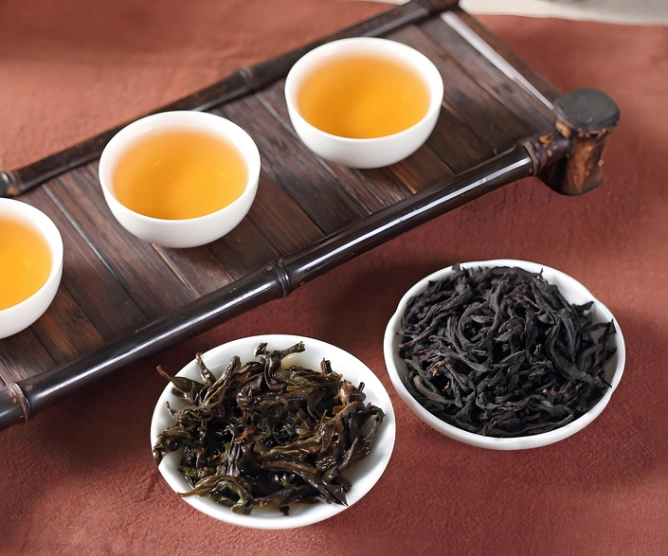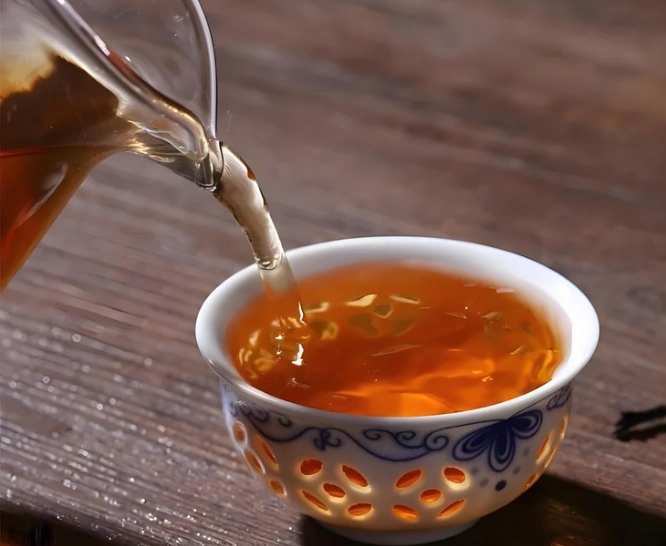Introduction: Oolong Tea After Meals as a Heartwarming Ritual
Oolong tea after meals has been cherished in Chinese tea culture for centuries—and for good reason. This semi‑oxidized brew, with its amber hue and whisper of floral and roasted notes, transforms a simple cup into a soothing finale to any meal. As you cradle the warm porcelain cup, the gentle steam carries a bouquet of orchid‑like fragrance, and the first sip unfolds layers of honeyed sweetness and toasty depth.
In the bustling pace of Western life, incorporating oolong tea after meals can be a simple yet powerful ritual that nurtures both body and soul, aiding digestion, uplifting the spirit, and grounding you in the present moment.
1. Why Embrace Oolong Tea After Meals?
When you finish a hearty dinner, your body’s digestive machinery springs into action—but it sometimes needs a little nudge. Sipping oolong tea after meals offers:
- A gentle metabolic boost: The tea’s moderate caffeine and catechins stimulate your metabolism without overstimulating your nervous system.
- A moment of mindfulness: The act of slowly sipping tea invites calm and helps you transition from active eating to relaxed repose.
- Cultural resonance: In China and Taiwan, hosts serve oolong as a respectful gesture of care—an invitation to linger, connect, and digest well.
By weaving oolong tea after meals into your routine, you honor a timeless tradition while supporting modern wellness goals.

2. How Oolong Tea Aids Digestion
Many tea lovers swear by oolong tea for digestion, and science offers clues why:
- Polyphenol power: Oolong contains theaflavins and thearubigins, antioxidants that may help soothe mild digestive inflammation.
- Gut‑friendly bacteria: Studies suggest tea polyphenols promote a healthy balance of gut microbiota, which is essential for efficient digestion and nutrient absorption【1】.
- Enhanced gastric motility: Warm liquids slightly raise stomach temperature, encouraging enzymes to break down food faster.
“A review in the Journal of Nutritional Biochemistry found that oolong tea polyphenols can modulate the gut microbiome, supporting digestive comfort and function.”
Read more →【1】
Imagine finishing a rich pasta dish or a creamy curry, then pouring a cup of oolong tea after meals. The warmth glides through your midsection like a gentle wave, easing any lingering heaviness.
3. Oolong Tea in a Weight Loss Diet
For those pursuing slimming goals, oolong tea in weight loss diet plans can be a delicious ally:
- Fat‑burning catechins: Research shows that regular oolong consumption increases energy expenditure and fat oxidation, helping to reduce body fat over time【2】.
- Appetite support: The ritual of a post‑meal cup—its scent, flavor, and warmth—can curb the impulse to snack immediately after dinner.
- Zero calories: Unlike sugary dessert or after‑dinner drinks, oolong tea adds no extra calories to your day.
“In a controlled trial, participants who consumed 4 cups of oolong tea daily for six weeks experienced a 6% greater fat loss compared to controls.”
Read more →【2】
Pair your balanced meals with a soothing cup of oolong tea after meals, and you’ll find your weight‑management journey both lighter and more flavorful.
4. Heart‑Healthy Benefits: Oolong Tea and Cholesterol
Heart health is another compelling reason to sip oolong tea after meals:
- Cholesterol modulation: Long‑term oolong drinkers have been shown to have lower LDL (“bad”) cholesterol and triglyceride levels compared to non‑drinkers.
- Antioxidant defense: The tea’s polyphenols guard blood vessels against oxidative stress and help maintain healthy blood lipid profiles.
“A cohort study in Nutrition Research reported that participants who drank oolong tea for over five years had on average 7% lower LDL cholesterol.”
Savoring oolong tea after meals becomes not just a flavor experience, but a nurturing habit for your cardiovascular wellness.

5. Other Invigorating Perks
Beyond digestion, weight, and cholesterol, oolong tea after meals delivers:
- Antioxidant boost: EGCG and other catechins help neutralize free radicals, supporting youthful skin and immune resilience.
- Gentle alertness: With 30–50 mg of caffeine per cup, oolong offers a clear, focused lift without coffee’s jittery crash.
- Calming L‑theanine: This unique amino acid promotes relaxation and mental clarity, making your evening unwind more serene.
Whether you need a soothing end to a busy day or a midday refresher, oolong tea after meals gifts you balanced energy and emotional calm.
6. Oolong Tea vs. White Tea: Which to Choose?
Both oolong and white tea hail from Camellia sinensis, yet they offer distinct experiences:
| Aspect | Oolong Tea | White Tea |
|---|---|---|
| Processing | Partial oxidation (20–80%), pan‑fired | Minimal; withered and dried |
| Flavor | Rich, toasty, floral or fruity layers | Delicate, light, subtle floral notes |
| Caffeine | Moderate (30–50 mg per cup) | Low (< 15 mg per cup) |
| Best for | Post‑meal ritual, metabolism support | Morning calm, low‑stimulus sipping |
If you crave a warm, layered tea with robust flavor and digestion support, oolong tea after meals is your perfect match. For a gentle start to the day, a pale white tea may be ideal.
7. Brewing Tips: How and When to Sip
Make the most of oolong tea after meals with these simple steps:
- Water temperature: Heat water to 195–205 °F (90–96 °C).
- Leaf quantity: Use about 2–3 g (1 teaspoon) of loose leaf per 8 oz cup.
- Rinse (optional): Briefly pour hot water over leaves and discard to awaken aroma.
- Steep time: 1–2 min for lightly oxidized oolongs; 3–4 min for darker roast styles.
- Multiple infusions: Refill with hot water 2–4 times—the flavor evolves with each pour.
Aim to brew oolong tea after meals about 10–15 minutes following eating. This window lets your stomach start the initial breakdown, then the tea’s warmth and compounds gently enhance digestion.

8. Product Recommendations
Discover exceptional oolong teas to elevate your post‑meal routine:
- Tanbiwencha Da Hong Pao Wuyi Rock Tea (1990s Vintage)
A legendary aged oolong with deep mineral notes and mellow roast. Perfect for savoring the warmth and richness after a fulfilling meal.
Shop now → - Tanbiwencha Tieguanyin Oolong Tea (1998 Batch)
Embrace the enchanting orchid aroma of this classic Anxi oolong. Its silky mouthfeel and floral sweetness create a spa‑like indulgence after dinner.
Shop now → - Tanbiwencha GABA Oolong (Taiwan High‑GABA)
Specially fermented to boost GABA content, this tea soothes the mind and body—ideal for unwinding and supporting restful sleep after your evening repast.
Shop now →
Conclusion: Make Oolong Tea After Meals Your Daily Celebration
Integrating oolong tea after meals into your lifestyle is more than a habit—it’s a heartfelt celebration of wellbeing. Each cup wraps you in warmth, supports digestion, encourages mindful moments, and gently nourishes your body. From antioxidant protection and metabolic lift to cholesterol balance and mental clarity, oolong tea offers a spectrum of benefits that align with holistic health goals.
So tonight, as the dishes are cleared and conversation winds down, pause. Brew a cup of oolong tea, inhale its enchanting aroma, and savor the peaceful transition from feast to calm. Your body, mind, and spirit will thank you—one soul‑soothing sip at a time.



